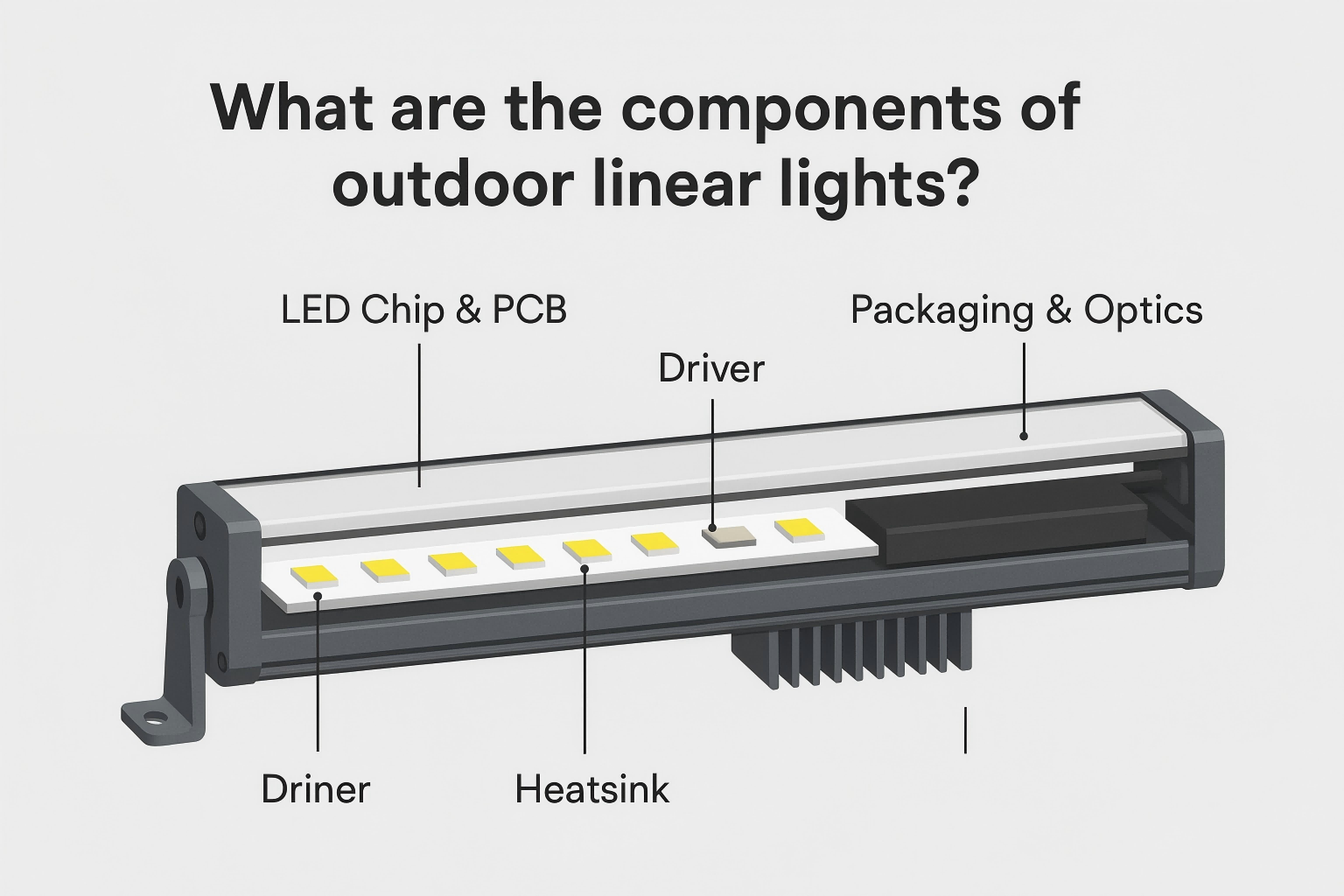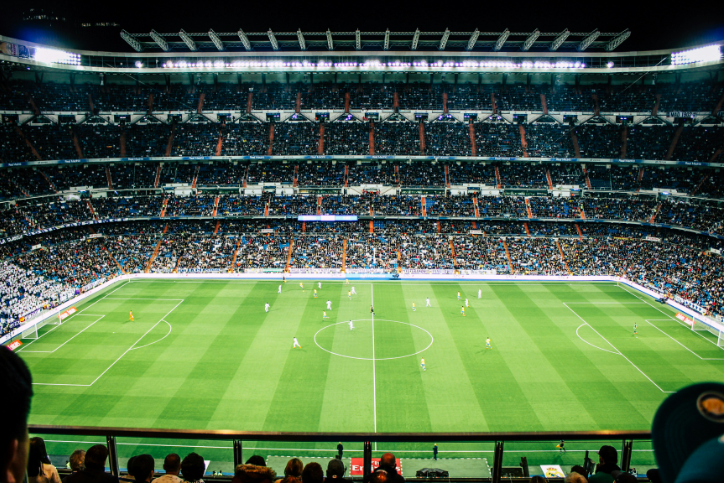LED Outdoor Lighting Design Guide: Energy Saving, Intelligent Control, and Brand Marketing Integration
In today's era of market competition and community building, outdoor lighting has long surpassed the single function of "lighting the road" and has become a silent transmitter of security, emotional experience, and brand image. Studies have shown that the use of high-efficiency LED lamps can save about 75% of energy consumption and contribute nearly 40% of the total energy-saving benefits in outdoor applications, bringing tangible operating cost reductions to enterprises. At the same time, a survey by the Pacific Northwest National Laboratory (PNNL) pointed out that by optimizing the distribution and control strategies of lamps, there is still significant additional energy-saving potential and room for improving community friendliness in the external lighting of commercial buildings.
However, the value of light is by no means limited to energy consumption performance. Research in the Journal of Consumer Psychology shows that light brightness will amplify people's emotional responses to a bright environment, positive experiences are more profound, and negative experiences are more easily amplified, and fine-tuning of color brightness can also significantly change consumers' perception and behavioral choices of spatial atmosphere and product attributes.
This article will analyze how to achieve multiple win-win situations of safety, comfort, and marketing benefits through scientific LED outdoor lighting design, from "creating a warm and welcoming scene" to "event-driven performance experience", and combining energy consumption return, intelligent control, and brand story. Next, let's start with the first beam of light before opening the door...
1. Crafting a Welcoming Lightscape—Before You Open the Door
For many customers, the experience starts in the parking lot. After Walmart replaced 154 high-glare metal halide lamps with warm white LEDs and motion-sensing dimming, neighborhood residents increased their satisfaction with lighting by 80%, which is critical to a friendly community. "Before, I tripped over carts in the glare," one resident recalled. "Now, I can see my license plate 100 feet away—everything feels crystal clear." These uniform light levels don't just make neighbors happy; data from the Pacific Northwest National Laboratory (PNNL) shows that these lamps can increase customers' willingness to stop and shop by up to 18%, which directly translates into higher traffic and sales.
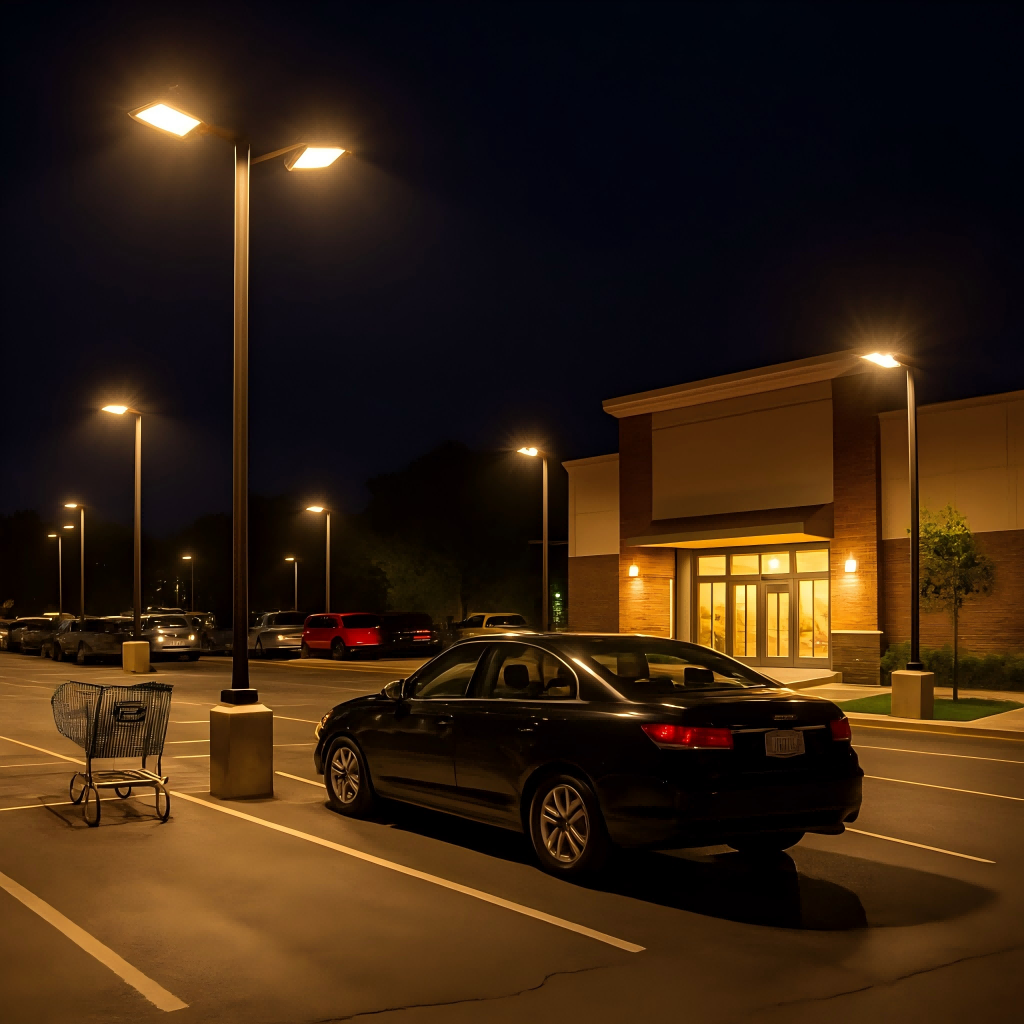
2. Beyond Beauty—How Light Shapes Spending Psychology
Lighting isn’t decoration—it’s an emotional cue. The Lighting Research Center found that warmer color temperatures (2700 K–3000 K) slow people down, increasing dwell time by 20–30% in retail settings. At Twilight Nook café, owner Mark observed his customers linger 53% longer under 2700 K wall sconces—and #CoffeebyCandlelight posts spiked on Instagram, amplifying word-of-mouth. Studies in the Journal of Consumer Psychology confirm that color quality heightens emotional engagement, making patrons more receptive to upsells and premium offerings.
3. Real-World Hurdles: “Smart” vs “Simple” Controls
Guests expect seamless illumination—no flicker, no downtime. Yet sophisticated “smart dimming” systems (DALI-2) often incur $75–$100 extra per fixture in commissioning and staff training. Facility manager Jorge Ramos admits, “Our first rollout flickered so badly we paused to retrain technicians.” By contrast, basic 0–10 V analog dimming powers up instantly with minimal setup but lacks per-fixture diagnostics. According to DOE’s Smart Controls Toolkit, under-budgeted commissioning can erode 30% of projected savings. Budgeting for expert setup ensures your lights enhance experiences instead of becoming a headache.
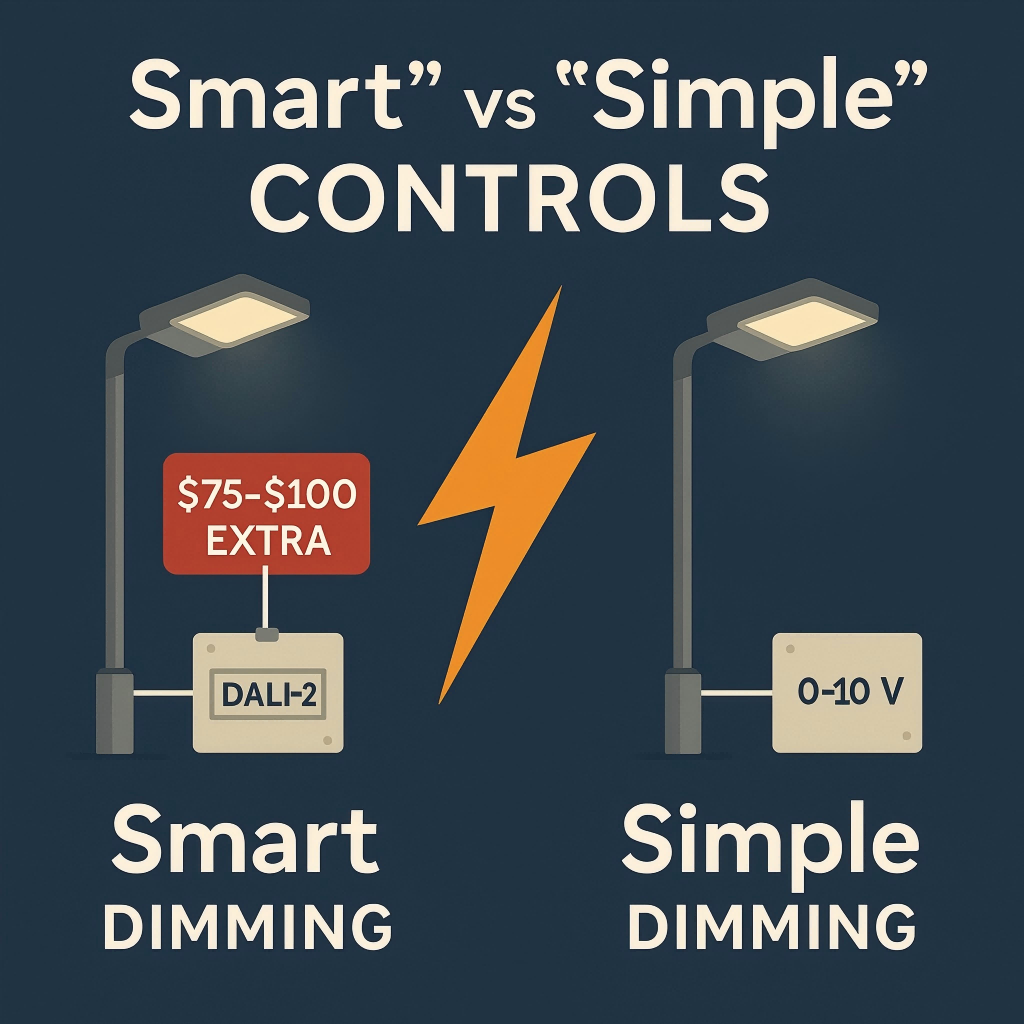
4. Strengthening Brand Storytelling with Light
First impressions form in seconds, and lighting speaks volumes. A 2024 PNNL review notes that spectral qualities steer perceptions of modernity vs. warmth. Luxury hotels often use cool-white LEDs (4000 K–5000 K) to evoke sleek sophistication, while neighborhood cafés lean on 2700 K amber to craft a “hearth-like” ambiance. At Artisan Bistro, chef Elena overheard diners say, “It feels like a candlelight dinner without the soot,” proving that the right hue can transform a meal into a memory.
5. Lighting as Performance—Event-Driven Experiences
For festivals and pop-ups, lighting becomes a stage. Riverside Plaza’s autumn food fair synced color-cycling uplights to live music, driving a 23% attendance bump and quintupling social-media shares, per plaza logs. Patrons describe the instant shift from amber to magenta as “magical,” creating shareable moments—free marketing that traditional decor can’t match.
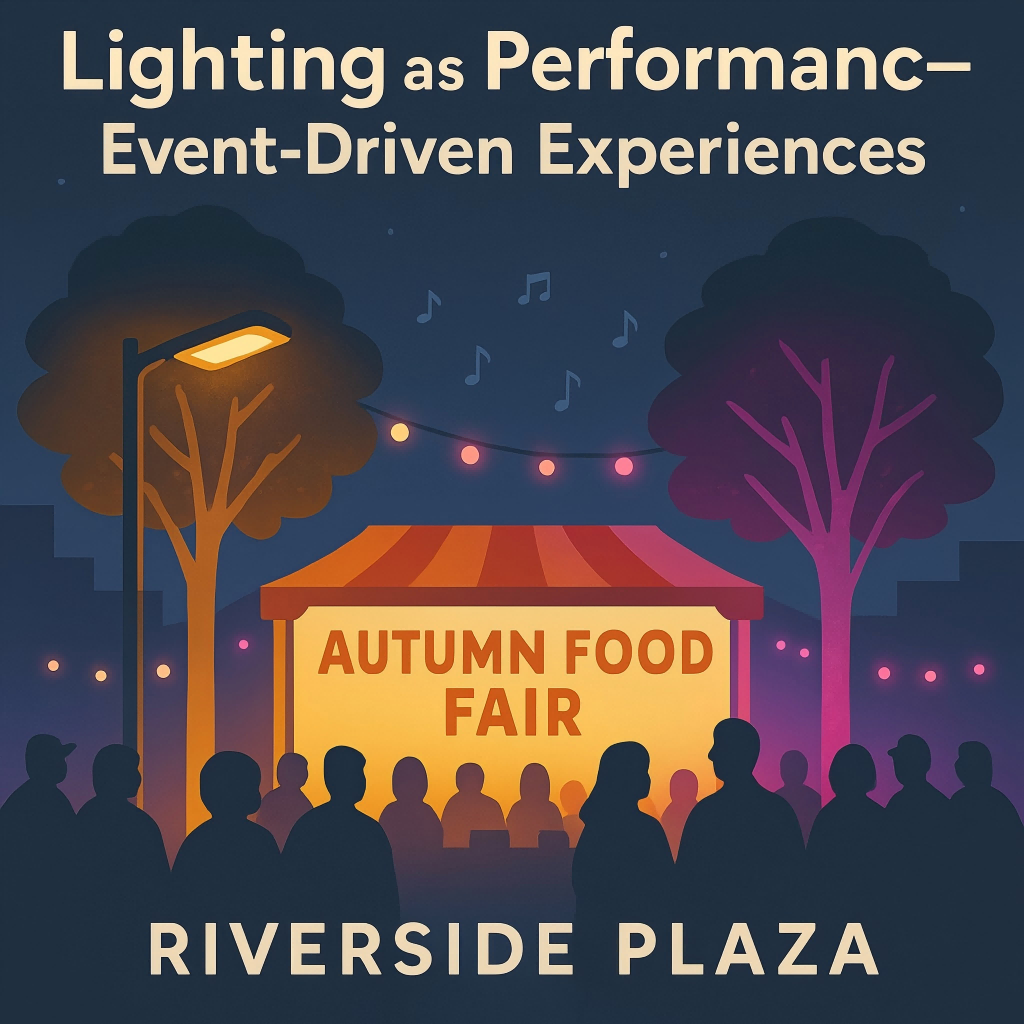
6. Deep Savings with Layered Efficiency
While customers don’t directly pay utility bills, they notice reinvestment in quality. LED fixtures alone cut energy use by 75% over legacy lamps; add daylight sensors or DALI-2, and you unlock another 30–50% via adaptive dimming. DOE’s Street Lighting Acquisition Evaluation Tool projects payback in under three years, with rebates covering up to 40% of the initial cost. As procurement lead Linda Nguyen puts it, “That rebate financed half our upgrade—ROI in months, not years.” These savings let you fund customer-facing perks—like live music nights or loyalty promotions—reinforcing a cycle of satisfaction and spend.
7. Connecting the Dots—From Metrics to Human Moments
True ROI isn’t just kWh or crime-rate stats; it’s the relief guests feel arriving under a consistent glow, the extended chatter over coffee, and the delight at a perfectly illuminated storefront. CPTED studies show properly lit exteriors cut crime by 20–30%, and retail lighting research ties stronger illuminance to a 12% uplift in window-display sales. By centering human experience—safety, comfort, and emotional resonance—you turn every beam of light into a memorable touchpoint that customers share and return to.
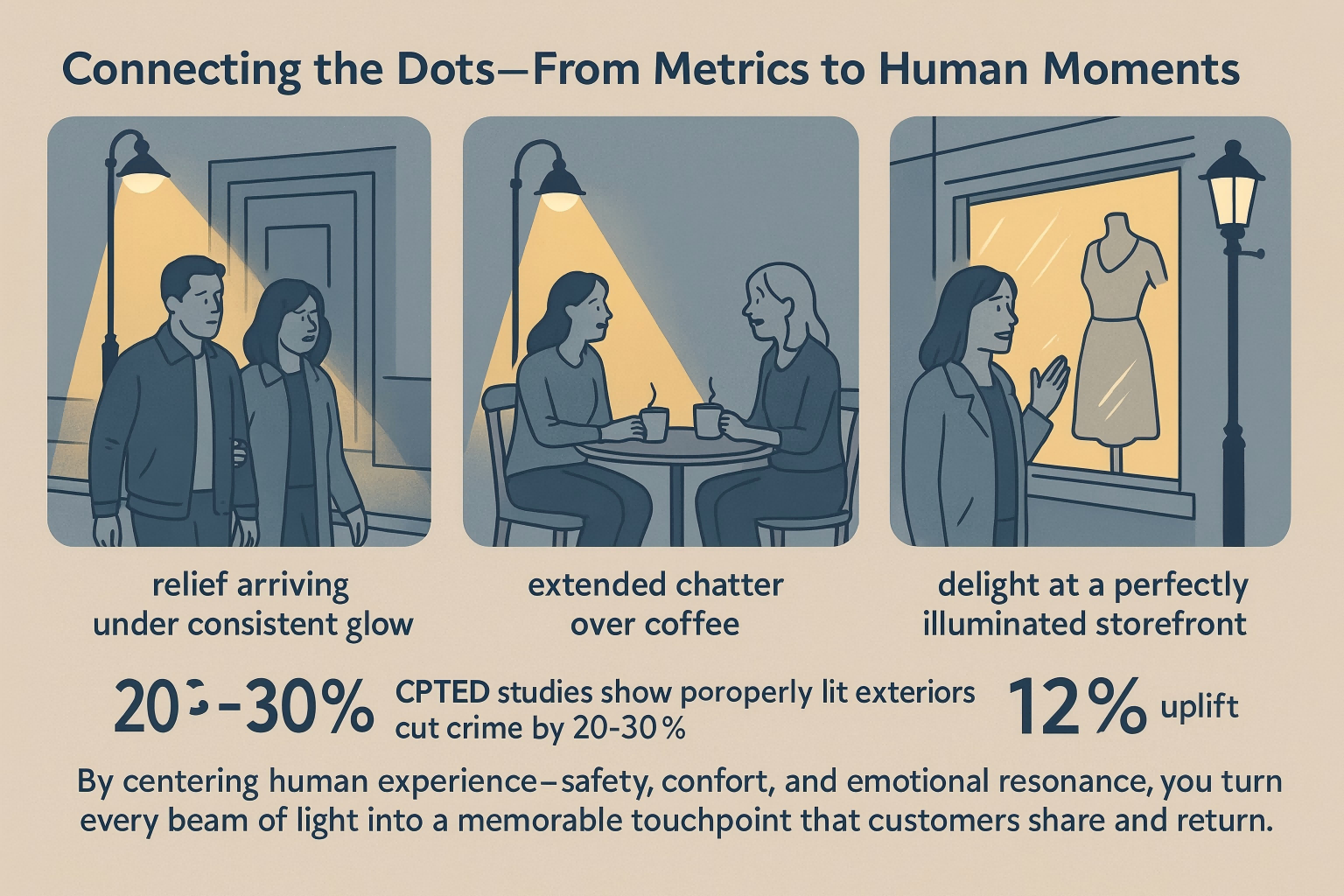
Conclusion
LED outdoor lighting solutions can reduce energy consumption by up to 75% compared to conventional fixtures, yielding substantial utility cost savings. LEDs typically last 25–50 times longer than halogen equivalents and 2–4 times longer than high-pressure sodium fixtures, with rated lifespans often exceeding 50,000 hours. The PNNL “Exterior Lighting Scoping Study” highlights that optimizing luminaire distribution and employing advanced control strategies, such as photosensors and networked systems, can unlock further energy savings beyond basic LED retrofits. Empirical research and meta-analyses demonstrate that improved street and parking lot lighting reduces crime rates by approximately 20%–30%, significantly enhancing community safety and security. Layered efficiency measures—including daylight sensors, DALI-2 dimming, and adaptive controls—can deliver an additional 30%–50% in energy reductions, frequently achieving full project payback within three years. Many utility and government rebate programs now cover 40%–50% of LED lighting project costs, further accelerating ROI and minimizing upfront investment. Finally, integrating daylight harvesting and adaptive dimming systems maintains consistent, comfortable illumination that adapts to ambient conditions, enhancing occupant comfort and satisfaction.
Illuminate Your Building's Future Now with LNJAMI.
We are a 17-year-old outdoor lighting source factory. Our main products are outdoor wall washers, linear lights, floodlights, point light sources, and other lamps. We generally adhere to providing customers with safe, reliable, and cost-effective products, and we have always paid attention to the protection of LED lamps. We can provide DC12V, DC24V, and AC220V lamps according to customer needs, and we can also provide customized lamps. If you have lighting project needs, please contact us.





